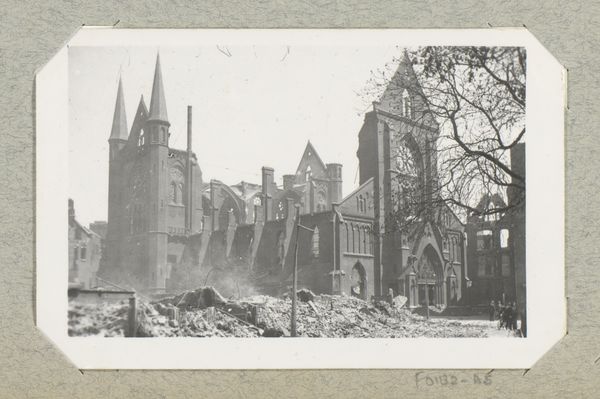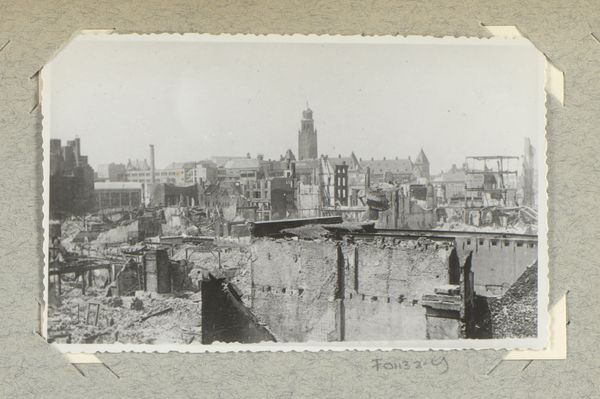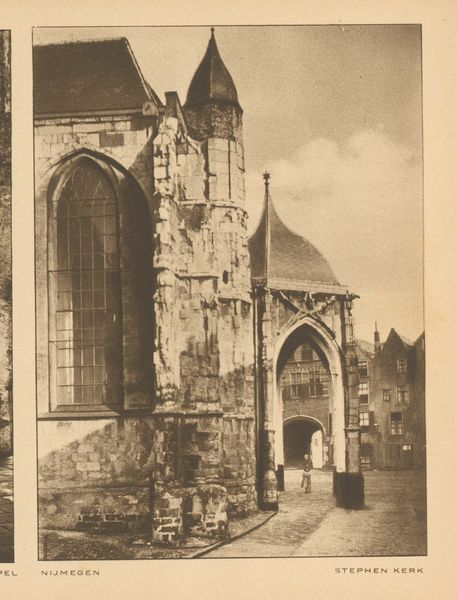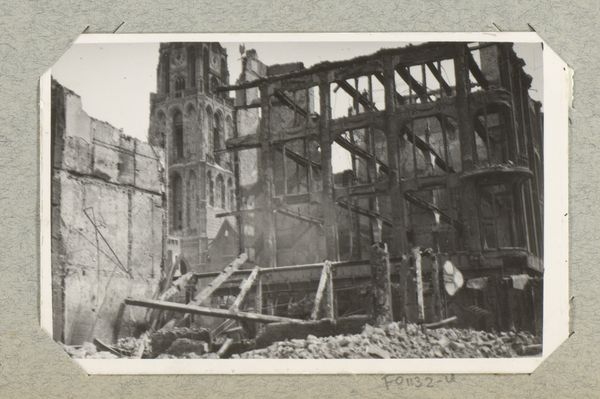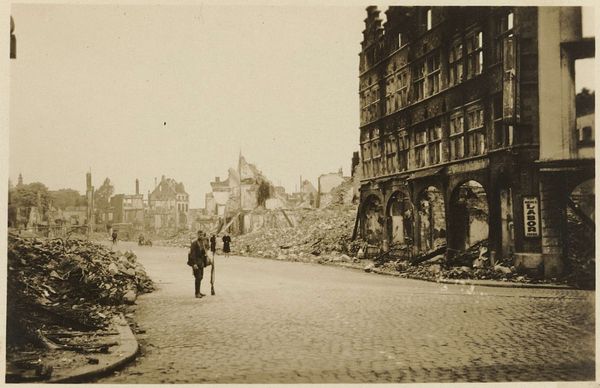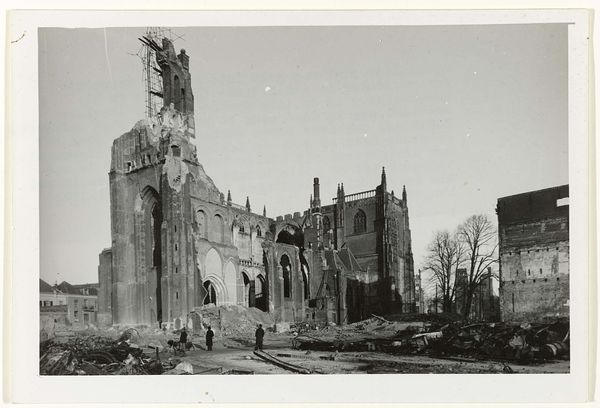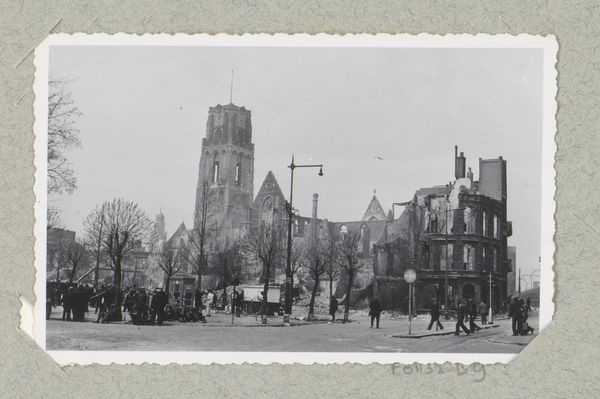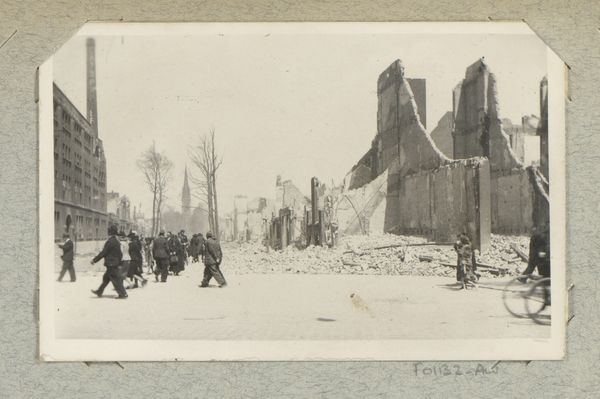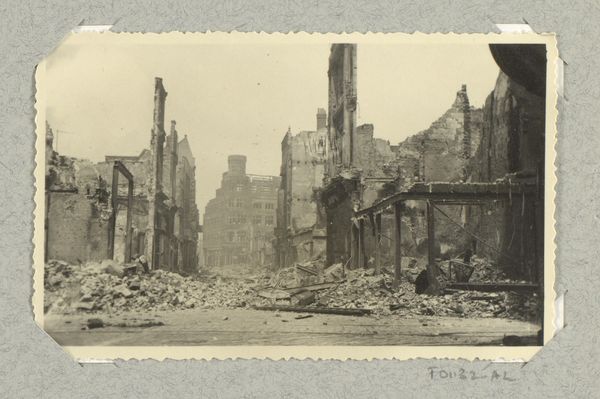
photography, gelatin-silver-print
#
portrait
#
photography
#
gelatin-silver-print
#
cityscape
#
modernism
#
realism
#
monochrome
Dimensions: height 90 mm, width 139 mm
Copyright: Rijks Museum: Open Domain
Curator: It has an unsettling calm to it, doesn’t it? Editor: It does. We’re looking at "Ruïnes rond de Grote of Sint-Laurenskerk te Rotterdam," a gelatin-silver print made by J. Nolte, sometime between 1940 and 1945. The image depicts the ruins around the St. Lawrence Church in Rotterdam. Curator: The monochrome really enhances the feeling of bleakness. It feels like the color has been leached out of the world. It really makes one think of those dark times during the war, doesn’t it? Editor: Absolutely. The photograph captures the aftermath of the bombing of Rotterdam, an event that had profound social and political implications. Nolte’s photograph, beyond documenting the devastation, serves as a potent symbol of resilience and urban trauma. Notice how the skeletal remains of buildings frame the sturdy church tower. Curator: I do. It is haunting, seeing ordinary life just sort of carrying on amongst all that ruin. I notice small groups of people here and there. Are they rebuilding? Mourning? Or both? Editor: It’s likely a mixture. The photograph offers a glimpse into the lived experience of those who remained, a poignant reminder of the collective effort required to rebuild not only structures but also social fabric. It became crucial to shaping postwar Rotterdam's identity, representing the will to rebuild against incredible odds. The church almost becomes a symbol of their determination, no? Curator: The church is definitely standing tall. To think this was somebody's home or their shop, their everything. Sobering. And Nolte capturing all this makes this piece also important, as a historical artifact that can elicit empathy and prompt a vital connection to our shared history. Editor: Indeed. By choosing a viewpoint that places us amongst the people within the wreckage, Nolte evokes a sense of unity and collective struggle. These ruins become a public site, an arena for recovery. Curator: Beautiful and terrible. It's quite the contradiction that Nolte captured. I feel quite contemplative, as I consider the weight of those ruins. Editor: And perhaps that’s its lasting power—making us consider what rises from the ashes, and how we memorialize, as well as learn from, catastrophic times.
Comments
No comments
Be the first to comment and join the conversation on the ultimate creative platform.
